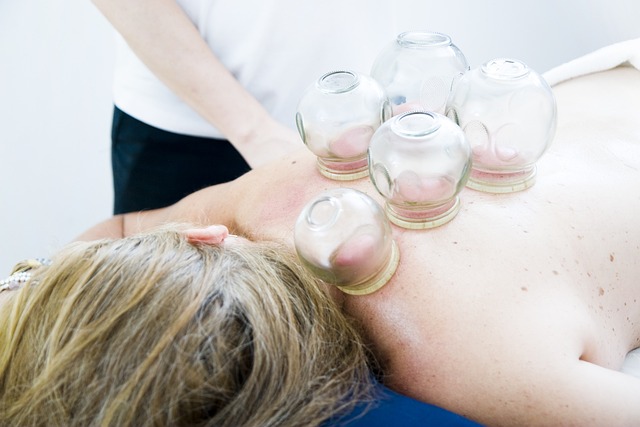Cold therapy, including ice packs, cold water immersion (cryotherapy), and the RICE method (Rest, Ice, Compression, Elevation), is an effective strategy for athletes to speed up injury recovery. These techniques reduce inflammation, lessen muscle soreness, and restrict blood flow to injured areas, aiding healing. The RICE method is a well-established protocol for acute injuries, while cold water immersion offers whole-body cryotherapy with added benefits. These methods are valuable tools for optimizing athletic performance and minimizing the risk of further damage after exercise or injury. Always consult a healthcare professional before trying new recovery methods.
“Unleash the power of cold therapy—a game-changer in post-exercise muscle recovery for athletes. Discover how this simple yet effective technique can revolutionize your training routine. From understanding the science behind ice’s impact to exploring various implementation methods, we’ll guide you through the benefits and best practices.
Learn about the RICE method, cryotherapy, and cold water immersion to reduce inflammation, alleviate pain, and accelerate recovery after intense workouts or sports injuries. Uncover why these techniques are becoming essential tools for athletes worldwide.”
Understanding Cold Therapy: A Powerful Tool for Athletes
Cold therapy, also known as cryotherapy, is a powerful tool in the arsenal of athletes and active individuals looking to enhance their recovery process. This method involves exposing the body to cold temperatures, typically through ice packs, cold water immersion, or cryosaunas, for a period of time post-exercise or after an injury. The primary goal is to reduce inflammation, minimize muscle soreness, and speed up the healing process.
For athletes suffering from sports injuries, incorporating cold therapy into their recovery routine offers numerous benefits. By applying ice or a cold compress to affected areas, blood flow can be restricted, which helps to decrease metabolic waste products and inflammation at the site of injury. The RICE method (Rest, Ice, Compression, Elevation) is a well-known approach that includes icing as a crucial component for managing acute injuries. Cold water immersion, such as soaking in an ice bath, has also gained popularity due to its ability to provide whole-body cryotherapy, offering additional anti-inflammatory and analgesic effects to aid in muscle recovery.
The Science Behind Ice and Its Impact on Muscle Recovery
The science behind ice and its impact on muscle recovery is rooted in the physiological effects of cold therapy. When an injured area is exposed to cold, such as through a cold compress or cold water immersion, it triggers a series of responses in the body. These include reduced blood flow to the affected muscles, which helps to minimize inflammation and swelling. Additionally, cold therapy can block pain signals, providing temporary relief from post-exercise muscle soreness.
The RICE method—Rest, Ice, Compression, Elevation—is widely recommended for sports injuries and is backed by extensive research. Resting the injured muscles allows them to heal without further damage. Applying ice within the first 48 hours can significantly reduce pain and inflammation. Compression helps to minimize swelling, while elevation ensures that excess fluid drains from the injury site. By following these principles, athletes can hasten their recovery and return to their active lifestyles more quickly.
Implementing Cold Therapy: Techniques and Best Practices
Implementing Cold Therapy involves a variety of techniques and best practices to maximize their benefits for post-exercise muscle recovery, particularly in managing sports injuries. One common approach is ice therapy, where cold compresses or ice packs are applied to the affected area. This helps reduce inflammation and pain by constricting blood vessels, which can limit swelling. For athletes, cryotherapy sessions, such as cold water immersion, offer a more intense but brief exposure to extreme cold, further enhancing recovery by reducing muscle soreness and speeding up repair processes.
Following the RICE method (Rest, Ice, Compression, Elevation) is a fundamental practice in managing sports injuries. Resting the injured area allows for healing while ice application provides pain relief and reduces swelling. Compression helps control inflammation, and elevation prevents fluid from pooling in the affected region. Additionally, using cold compresses strategically during and after intense workouts can prevent muscle injuries from occurring in the first place, making it an effective tool for athletes looking to maintain peak performance.
Benefits and Considerations for Using Cold Therapy Post-Exercise
Cold therapy has gained significant attention in the sporting world as a powerful tool for post-exercise muscle recovery and injury prevention. The practice, often involving ice or cold water immersion, offers numerous benefits to athletes and active individuals looking to alleviate pain, reduce inflammation, and speed up the healing process. One of the key advantages is its ability to decrease metabolic activity in injured tissues, leading to less swelling and discomfort. This method is particularly effective for sports injuries, such as sprains, strains, and muscle soreness, commonly experienced by athletes.
When considering cold therapy, it’s essential to understand the RICE method: Rest, Ice, Compression, and Elevation. This approach ensures that ice (or cold compresses) is applied strategically post-exercise. While ice therapy for injury recovery has been a long-standing practice, modern advancements like cryotherapy chambers offer enhanced benefits with controlled exposure to extreme cold. However, it’s crucial to balance the treatment duration to avoid potential side effects, such as prolonged cold exposure leading to decreased blood flow and tissue damage. As always, consulting with a healthcare professional before incorporating new recovery methods is advised, especially for individuals with specific health conditions or concerns.
Cold therapy, including techniques like ice baths, cold water immersion, and cold compression, has emerged as a powerful tool in the arsenal of athletes and sports professionals. By understanding the science behind its effectiveness and implementing best practices, individuals can harness the benefits of cryotherapy for accelerated muscle recovery post-exercise. Incorporating the RICE method (Rest, Ice, Compression, Elevation) into routines not only aids in reducing inflammation and pain but also supports the healing process for various sports injuries. As research continues to uncover the full potential of cold therapy, athletes can benefit from these evidence-based practices to optimize performance and enhance overall well-being.
